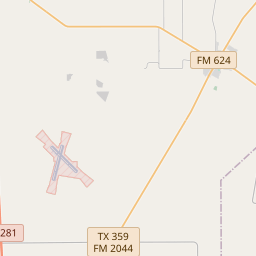Rodriguez, Josepha
Historical marker location:






Josepha Rodríguez, known as "Chipita," was hanged in 1863 for the murder of John Savage. She remained the last woman legally executed in the state of Texas until 1998. Little is known of Rodríguez' life, though it is believed that she was the daughter of Pedro Rodríguez; they moved to San Patricio de Hibernia when Chipita was young. Chipita earned money by hosting travelers on the Cotton Road, a section of the Camino Real which ran through Texas and passed over the Aransas River near her house.
In August 1863, John Savage, a horse trader, roomed at the Rodríguez homestead. Soon afterwards, he was found dead in the Aransas River. Sheriff William B. Means arrested Rodríguez, believeing she murdered savage for $600 in gold which he was carrying; Means also arrested Juan Silvera as an accomplice. A grand jury indicted the two, and although the missing gold was recovered prior to the trial, Rodríguez was found guilt of Murder. The jury recommended leniency, because of the circumstanital evidence, but Judge Benjamin Neal sentenced Rodríguez to hang. She was executed on November 13, 1863. Her age at the time was unknown, though she was likely at least sixty years old.
The trial's fairness was questioned because of the jurists' problematic personal histories, Rodríguez' weak defense counsel and the lack of a motion for retrial, among other issues. Most of the court records have been lost, and discrepancies exist in trial accounts. Rodríguez' hanging has contributed to local lore and has been the subject of numerous writings and other works. In 1985, the Texas Legislature absolved Josepha "Chipita" Rodríguez of murder in a resolution signed by the Governor. (2008)
As one of the most visible programs of the Texas Historical Commission (THC), historical markers commemorate diverse topics in Texas history, including: the history and architecture of houses, commercial and public buildings, religious congregations, and military sites; events that changed the course of local and state history; and individuals who have made lasting contributions to the state, community organizations, and businesses.
Texas was once an independent country: After winning its independence from Mexico in 1836, Texas became its own country, known as the Republic of Texas. It existed as an independent nation for nine years before being annexed by the United States in 1845.
By the early 19th century, Mexican settlers began to populate the area, leading to the establishment of San Patricio de Hibernia, a small community near the Nueces River. This settlement grew, becoming the county seat and a major center of commerce. However, as tensions grew between Mexico and the United States, San Patricio County became a focal point of conflict during the Texas Revolution. In 1836, local residents joined forces with Texan rebels to fight against Mexican forces in the Battle of Nueces.
After Texas gained independence from Mexico, San Patricio County continued to grow and develop. The discovery of oil and natural gas in the early 20th century brought prosperity to the area and attracted new industries. Agriculture, particularly cotton farming, also played a significant role in the county's economy. Over time, the county's population diversified, with immigrants from Ireland, Germany, and other parts of Europe contributing to its cultural heritage.
In recent decades, San Patricio County has continued to thrive, with the expansion of industrial and manufacturing sectors. The county is home to major refineries, chemical plants, and a naval air station. It has also become a popular tourist destination, with its coastal location offering beautiful beaches, recreational opportunities, and attractions such as the Copano Bay State Fishing Pier and the historic town of Sinton. Today, San Patricio County remains a vibrant community, embracing its rich history while looking toward a bright future.
San Patricio County Timeline
This timeline provides a condensed summary of the historical journey of San Patricio County, Texas.
- 1828 - The Mexican government grants land to Irish empresarios James Power and James Hewetson, leading to the settlement of Irish immigrants in the area that would become San Patricio County.
- 1836 - Texas gains independence from Mexico, and San Patricio County is officially established as a county of the Republic of Texas.
- 1870 - Railroads, including the Texas-Mexican Railway, begin operating in San Patricio County, boosting trade and transportation in the region.
- 1886 - The discovery of oil in neighboring Nueces County leads to the development of the petroleum industry in San Patricio County.
- 1927 - The town of Taft is incorporated, becoming an important center for the oil and gas industry in the county.
- 1941 - The Naval Air Station Corpus Christi is established southwest of Portland, becoming a major training base during World War II.
- 1961 - The construction of the Port of Corpus Christi's Ingleside Marine Terminal begins, further boosting the county's economic growth.
- 1970 - The completion of the Interstate Highway 37 connects San Patricio County to major transportation routes.
- 2017 - Hurricane Harvey makes landfall in San Patricio County, causing significant damage to the area.